News
These Are the Fighters Air Forces Are Acquiring Most of in 2023: Which Have the Most Promise For Next Generation Warfare?
As perhaps the most iconic and widely recognised symbol of a state’s military power, and as a kind of asset which through technological advances has operated in a growing number of roles, fighter aircraft are set to continue to be heavily invested in by almost all major military powers well into the 21st century. In contrast to most of the 20th century, fighters in the 2020s are some of the most critical and versatile assets employed by state militaries, and can play roles ranging from airborne early warning and control to offensive electronic warfare, air defence suppression, nuclear weapons delivery, anti shipping and air to air combat. The ability of fighters to spearhead major assaults that have decided the course of many of the wars of recent decades, from the Gulf War in 1991 to the NATO-Libyan War 20 years later, has made investment in acquisitions, as well as in asymmetric means of countering them such as advanced air defence systems, a common priority for militaries across the world particularly in regions experiencing high inter-state tensions such as Europe and Northeast Asia.
Although production of other kinds of assets such as cruise missiles, artillery rounds and attack drones has increased significantly across several countries as geopolitical tensions between the Western Bloc and its adversaries have risen, particularly after February 2022, the very significant time required to scale up production of modern fighter aircraft means this remains one field where production quantities change particularly slowly. With fleet compositions planned over decades, and fighter programs being the most costly kind of weapons programs to pursue, they stand out in this regard as an asset type. Nevertheless a look which fighters are being acquired on the largest scales by air forces across the world provides an important indication as to which programs are dominating production today, and the kinds of fighters which are seeing their numbers in service grow the fastest.
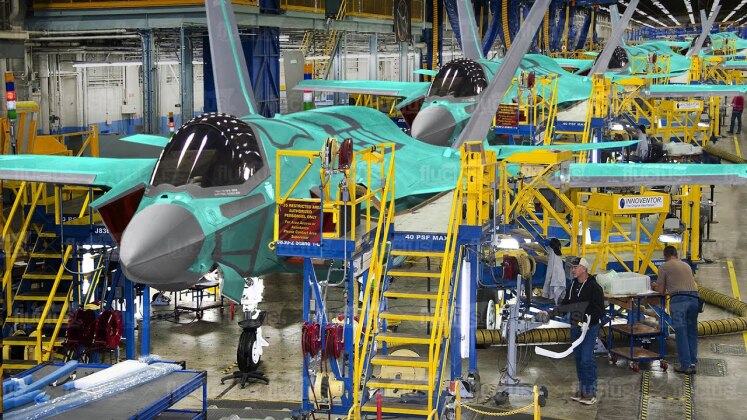
U.S. Air Force: 48 F-35s
The F-35 for years unprecedentedly held the position of the only fighter class the U.S. Air Force had on order before the service began to acquire the F-15EX fourth generation fighter in small quantities from 2021. The fighter is also the only one from the fifth generation in production in the Western world, placing it in a league of its own in terms of capabilities despite originally having been conceptualised as a lighter and cheaper counterpart to the heavyweight twin engine F-22 Raptor. Due to wide ranging issues the F-22 saw production terminated just 25 percent of the way through planned numbers, and has not received the latest sensor, data link and other key avionics technologies. The F-35A is considered an optimal fighter for the 21st century when penetrating enemy ground based air defences is considered a far more likely mission than engaging peer level fighter jets, due to the scarcity of air forces outside the Western sphere of influence which field top performing fighters. Developed under the Joint Strike Fighter program, the F-35 is far from the most manoeuvrable combat aircraft or the best optimised to air to air combat, but was designed to field stealth capabilities affordably allowing it to be deployed very widely. The fighter is in production on a scale comparable to the combined output of all other Western fighter classes, although it is not yet considered ready for high intensity combat. Its unique status among NATO-compatible aircraft has made it a leading performer on the export markets of Western-aligned countries particularly in Europe.
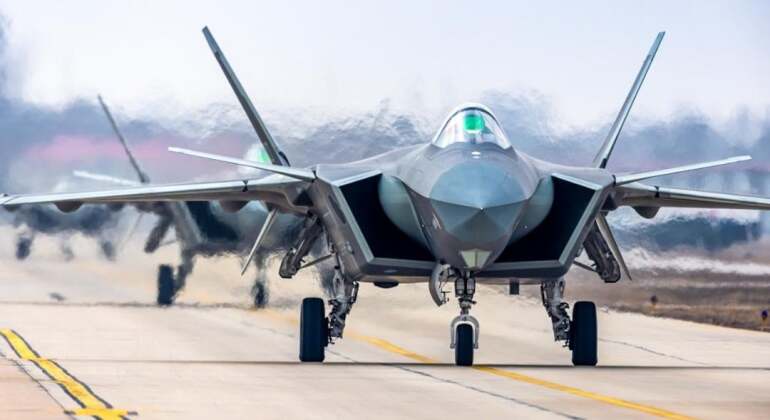
Chinese PLA Air Force: Approximately 42 J-20s
The only other fifth generation fighter both in production and fielded at squadron level strength alongside the F-35, although the J-20 similarly emphasises stealth capabilities and cutting edge avionics it is a very different design as a larger twin engine heavyweight aircraft developed primarily for high end air superiority missions. The fighter began deliveries to the People’s Liberation Army (PLA) Air Force in 2016, and began development at a time when it was expected that the U.S. Air Force would field large numbers of F-22 air superiority fighters and modernise them continuously over a long production run. Without a significant modernised F-22 fleet to face off against, the J-20 and particularly the latest J-20B variant boasts significant advantages over rival fighter classes including the F-35, which as a much smaller aircraft not designed for air superiority missions cannot fly as fast, as far or as high or carry comparable quantities of ordinance or a similarly large radar. With the two benefitting from many cutting edge avionics features not seen on other fighters such as distributed aperture systems, the J-20 gained a distinct advantage in weaponry with the introduction of the PL-15 and PL-10 air to air missiles, which the United States has since invested heavily in bridging the gap with with programs such as the AIM-260 missile.
The J-20 is produced on a far larger scale than any other heavyweight fighter class, and on a comparable scale to that which the F-22 was initially expected to be built on. It is the first jet fighter from outside the United States, Russia or the Soviet Union to be considered a serious contender for the title of the world’s most capable in the air to air domain. The class has seen more variants ordered by the air force of its producing country than any other fifth generation fighter, including the baseline J-20, the J-20A with improved WS-10C engines and stealth features that entered service from 2021, the J-20AS twin seater, and the J-20B with further improved stealth capabilities and much improved WS-15 engines. The WS-15 provides the J-20 with far more thrust than any other fighter class in the world, while increasing its range and opening up new possibilities in terms of weapons integration and allowing for supercruising flight at greater speeds than the WS-10C could facilitate.
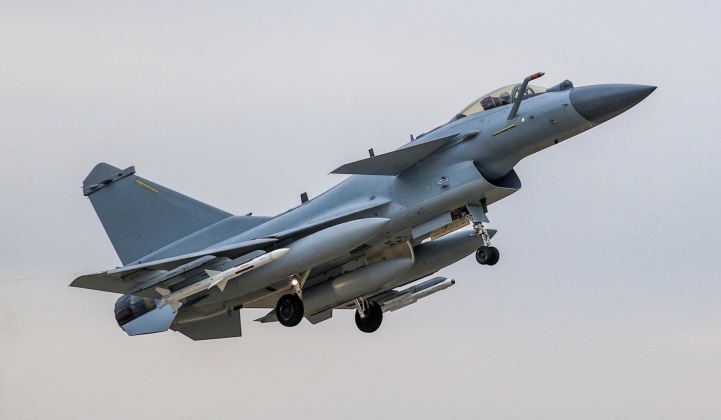
Chinese PLA Air Force: Approximately 42 J-10Cs
Entering service from 2018 the J-10C is one of three fighter classes acquired in very large numbers by the PLA Air Force from the mid 2010s, with acquisitions estimated to have at times come close to 50 per year before Pakistani orders in 2021 resulted in a portion of capacity being diverted to meet foreign demand. The fighter is a lightweight single engine design with ‘4+ generation’ capabilities and is considered the closest rival to the F-35A among single engine fighters in terms of overall performance. What it lacks in stealth capabilities, it makes up for in availability rates, maintenance simplicity, flight performances, and advanced weaponry. The aircraft was deigned with low operational costs and maintenance requirements allowing it to be fielded in large numbers, but has proven in exercises to still be highly formidable – frequently outperforming both the Russian Su-35 and the Russian jet’s local counterpart the J-16 in simulated engagements. Like all aircraft of its size the fighter is limited by its relatively short range and the limited size of the radar and weapons payload it can carry compared to heavyweight fighters like the J-16 or J-20. It nevertheless provides a means of bringing Chinese fighter units up to the latest standards in terms of avionics, weaponry and flight performance very quickly and inexpensively with overwhelming superiority over the J-7 and J-10A fighters it has succeeded in key positions, and with significant advantages over the large majority of fighter classes which the PLA Air Force could expect to face in combat.
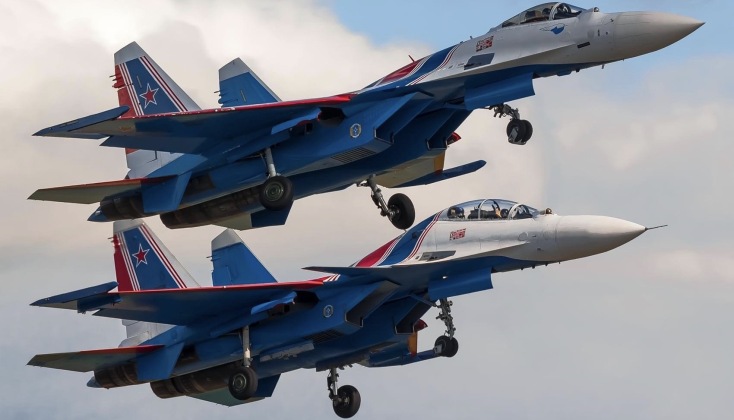
Russian Air Force: Approximately 40 Su-30/34/35 Flankers
Eight years after the Su-27 Flanker fourth generation heavyweight air superiority fighter joined both the Soviet Air Force and the Air Defence Forces in 1984, the Russian Defence Ministry from 1992 seriously curtailed both acquisitions and deployments of fighters from other classes due to the sharp contraction of the country’s economy and defence budget. The Su-27 had the endurance needed to efficiently cover Russia’s vast territory despite the bulk of airbases ceasing operations in the 1990s and the large majority of fighter units being disbanded, and while the post-Soviet Russian fleet was vastly outnumbered by NATO the Flanker’s significant performance advantages over rival fighter classes was seen to at least provide a qualitative edge. Three decades later, however, the Russian Air Force has only become more reliant on the Flanker design in its modernised forms – with almost all fighter acquisitions in the last 30 years having been Su-30M2 and SM multirole fighters, Su-34 strike fighters and Su-35 air superiority fighters, all of which are produced at a rate of approximately 14 per year at facilities in Irkutsk (Su-30SM), Novosibirsk (Su-34), and Komsomolsk on Amur (Su-30M2 then Su-35S). The Flanker classes between them, although having very different capabilities and relatively low parts commonality, have capabilities which are highly complementary. Nevertheless the fact that the scale of acquisitions of all three is lower than that the leading single fighter classes in the U.S. and China indicates how much smaller the Russian Air Force’s fighter fleet has become particularly compared to the Soviet era. The Flanker series was initially expected to cease acquisitions around the early 2010s, a decade after the Soviet Union brought the fifth generation MiG 1.42 into service, but Russia’s struggles operationalising a fifth generation fighter have resulted in a continued reliance on Flanker variants.
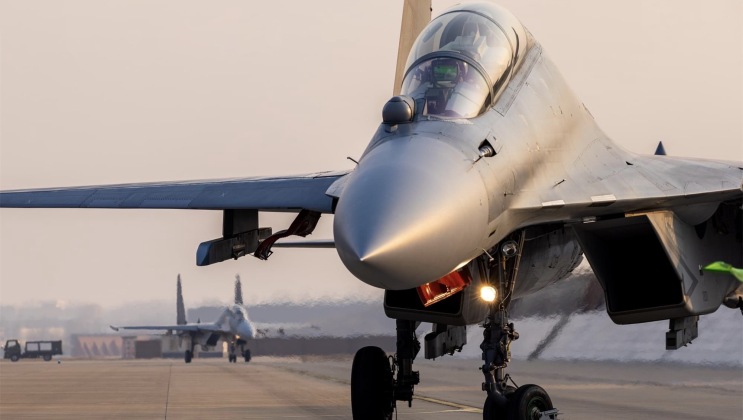
Chinese PLA Air Force: Approximately 28 J-16s
Improving Sino-Soviet relations in the late 1980s, and Moscow’s perceived need amid the collapse of the Warsaw Pact to strengthen security ties with its largest neighbour, resulted in China becoming the first foreign client for the Su-27 Flanker in 1990 with three aircraft delivered the following year before the USSR disintegrated. The advanced capabilities of the Su-27 led China to acquire significant numbers, including close to 100 of the enhanced Su-30 variants from the late 1990s into the mid-2000s, as well as license producing the Su-27 domestically and acquiring them in far greater quantities than the Russian Defence Ministry could itself afford. The large majority of Su-27s produced in post-Soviet Russia thus went to the Chinese People’s Liberation Army Air Force and Navy. Chinese derivatives of the Su-27 increasingly came to surpass the Russian originals leveraging Chinese advances in electronics, weaponry and composite material technologies, culminating in the J-16 which began to be fielded in 2014 as a ‘4+ generation’ fighter.
The J-16 lacked the extended range and powerful engines of the Russian Su-34 and Su-35, but eclipsed them in most other performance metrics. Its most notable advantages were provided by the much greater use of composite materials in its airframe, its use of an AESA radar, and perhaps most significantly its network centric warfare capabilities and weaponry including missiles developed for the J-20 such as the PL-15 and PL-10. J-16s have been acquired in approximately to double the rates of Russian Flanker models at around 28 per year, with the aircraft coming in a standard twin seat configuration and having a performance well balanced between air superiority and strike roles. Chinese investment in Flanker type aircraft has nevertheless diminished as the J-20 has matured and seen deliveries expanded.












